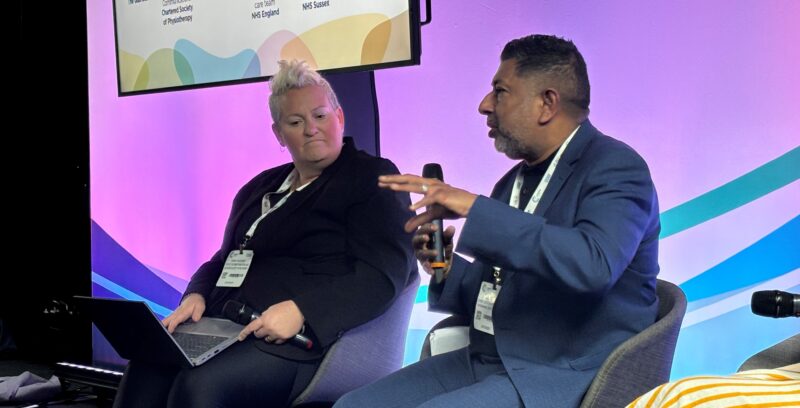Published on: 19,Aug 2024
Duleep Allirajah, CEO, The Richmond Group
This blog is based on Duleep’s panel appearance at the NHS ConfedExpo 2024 Conference in The Chartered Society of Physiotherapists’ session titled: As important as medicine or surgery: rehab’s role in delivering a healthy nation – NHS ConfedExpo 2024

Four years ago, my mother had just turned 90 and was quite independent. She was walking to the shops and going to church regularly.
She has arthritis, type 2 diabetes, chronic kidney disease and is prone to UTI’s, but a home help from Age UK used to visit her and she could spot the warning signs of anything that might be going wrong with her health.
During the pandemic, that service stopped, and my mother started falling more frequently and becoming more confused. Within the space of four years, she went from someone who was relatively mobile to someone who is now housebound and sits in a chair all day.
The same cycle kept recurring. She would have a fall and get admitted to hospital where she would stay for a week, sometimes a few weeks. The hospital rehab team would support her to the point where she could be discharged. Once she was back at home, she would face a 6-week wait for a community physio.
Sometimes no one came at all. Often if they did come, my mother would get one session and never see them again.
And so, each time she came out of hospital she would grow weaker and more fragile. She stopped going to the supermarket. She stopped climbing the stairs. Then she stopped being able to cook her own meals.
She now sits in a chair all day and can’t go outdoors at all because her calf muscles have wasted away to the point that they can no longer bear her own weight.
Her quality of life is non-existent, yet she is still living. Just about. This is what the absence of rehabilitation means for millions of people like my mother. All of this was preventable. All of it. It happened because what little rehabilitation provision exists is supporting people in the wrong places. It’s concentrated in acute hospitals to support discharge.
People need rehab after an illness or an accident. But they also community services, including rehabilitation, that support people preventatively, so that they are not continually in and out of hospital every time they have a fall. Rehab could have supported her to remain mobile, to walk to the shops, to see her family, to have a life. Sure, surgery and medicine save lives but rehabilitation helps people to live.
Not all the support people who are frail or at high risk of hospital admission require is clinical. There are really good models of proactive care which support people to live independently and stay out of hospital – like the British Red Cross’s high intensity use services which work with people who frequently attend A&E to address the root causes of health crises.
Often, what is causing a person’s health problems to escalate is a mix of clinical and non-clinical problems – loneliness, bad housing, financial distress. The solutions aren’t always about clinical interventions – it could be attending a day centre, getting benefits advice, joining a local walking group or an exercise class. This is rehabilitation in its broadest sense – supporting people to live as well as they can.
My mother’s story isn’t unique. There are millions of people like her. One in four of us is living with multiple conditions. People with two or more long-term health conditions account for 50% of hospital admissions.
This isn’t about me or my mother but all of us. Our parents, us, and our children. The government’s 10-year health plan is a once-in-a-generation opportunity to rethink care for the growing proportion of people who, like my mother, are living with multiple health conditions. We need a health system that anticipates and prevents crisis, rather than simply reacts to it. And rehabilitation should be at its core.
Tagged with: